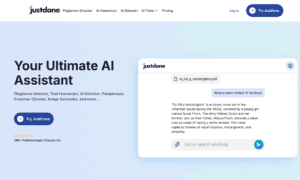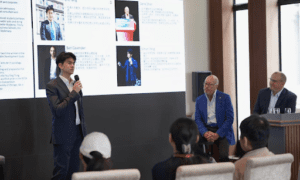SEO, as a discipline, has seen a seismic shift over the last decade. In the early days, search engines were unsophisticated, allowing for keyword stuffing and backlinking strategies to dominate the scene. As these search engines have evolved, particularly Google with its myriad of algorithm updates, the focus has shifted significantly towards content quality. Search engines now employ advanced AI and machine learning to effectively analyze and rank content, making quality the king of the SEO realm.
The modern era of SEO demands that content not only contains keywords but offers genuine value to the reader. Content must be informative, well-researched, engaging, and relevant to stand a chance in today’s competitive landscape. High-quality content has become synonymous with credibility, and search engines are ever more adept at sniffing out articles that users find useful, evidenced by metrics such as time on page and bounce rates.
Websites cannot rely on old tactics any longer. The emphasis has shifted towards understanding user intent and delivering on that need. This means that websites must offer content that addresses specific questions, provides comprehensive information, and enhances the user experience. The evolution of SEO makes it clear: to rank well, content must be crafted with the user in mind, above all else.
Understanding User Intent: A Pillar of Content Quality
User intent has emerged as a cornerstone of content creation in the context of SEO. Essentially, it’s about discerning what users are really looking for when they type a query into a search engine. Whether they want to learn something, find a specific website, or make a purchase, aligning content with user intent is vital. The more accurately a piece of content aligns with and satisfies the user’s intent, the higher its perceived quality in the eyes of search engines.
To truly grasp user intent, one must dive deep into keyword research. Long-tail keywords, for instance, offer tremendous insight into what users are seeking. They often reflect precise queries and, when addressed correctly within content, signal to search engines that your content is a good match for those queries. But it’s not just about including these keywords; it’s about building content around them that fulfills the user’s needs.
Crafting content that meets user intent does more than just please search engines. It builds trust with your audience. When users find what they need on your site, they’re more likely to return, share your content, and convert into customers. By ensuring that your content aligns with what your visitors are searching for, you lay a foundation of reliability and authority that extends far beyond SERP rankings.
Keyword Optimization: Strategic, Not Stuffed
While aligning content with user intent, keywords must be woven into the fabric of your articles in a strategic manner. Gone are the days when a website could simply sprinkle in a high volume of keywords to climb the search rankings. Now, keyword stuffing can actively harm your SEO efforts, as search engines penalize sites that don’t provide genuine, reader-friendly content.
Effective keyword optimization starts with selecting the right keywords—those that are relevant to your content and have a realistic chance of ranking. This requires a balance between high-volume keywords and those with less competition. Once the right mix is selected, these keywords need to be integrated seamlessly into the content, appearing in titles, headers, and throughout the body text in a way that feels natural.
Keywords should also be included in meta descriptions, alt text for images, and URLs where appropriate. However, these technical aspects should not overshadow the need for readability and quality in the actual body content. The ideal state is when a reader doesn’t even notice keywords because they’re an organic part of the narrative.
Content Structuring: Crafting for Readability and SEO
The organization of content on a page plays a crucial role in its readability and SEO effectiveness. Good structure guides users through the content, enabling them to find the information they need quickly and easily. This is achieved through clear headings, short paragraphs, and a logical flow of ideas. A well-structured page not only enhances user experience but also allows search engines to better understand and rank the content.
Subheadings are particularly important as they break the text into manageable chunks and help to organize the content in a hierarchy that search engines can follow. These subheadings should include keywords where relevant, further reinforcing the topic of the content to search engine algorithms. Furthermore, bullet points and numbered lists can improve readability by presenting information in a clear, concise manner.
The use of images and videos within content should also be considered part of its structure. These elements can help explain complex information and add an interactive element to the content. However, it’s crucial that all visual elements have appropriate alt text to ensure they contribute to the SEO of the page and are accessible to users who may rely on screen readers.
The Value of Original Research in Content
In a sea of repeated information and rehashed content, original research stands out. It provides unique value that is highly prized by both users and search engines. When content creators invest time and resources into conducting their own research, surveys, or in-depth studies, they not only build credibility but also produce content that is more likely to gain backlinks and shares.
Original research serves as a primary source of information that can be cited by others, which can significantly increase the authority and trustworthiness of your site. When search engines recognize that your site is frequently linked to as a source of valuable data, they’re more likely to rank your pages higher. This also means that your content is less likely to be seen as duplicative, which is a factor search engines consider negatively.
Furthermore, content that includes unique statistics or findings can become evergreen, continuing to attract traffic long after it’s published. Journalists, bloggers, and influencers in your industry are always looking for new insights to share with their audiences, and providing them with this can establish your site as a thought leader in your niche.
Multi-Media Integration: Beyond the Written Word
SEO is no longer just about text. Integrating multimedia elements like images, videos, and infographics can dramatically enhance content quality and engagement. Visual elements can help to explain complex information, appeal to different learning styles, and break up long sections of text. This not only improves user experience but can also lead to better search engine rankings as it can increase time spent on the site and reduce bounce rates.
When using multimedia, it’s important to ensure that it is optimized for search engines. This includes using high-quality files, compressing them for faster loading times, and including keywords in file names and alt text descriptions. Videos should have closed captions and transcripts not only for accessibility but also to allow search engines to better understand their content.
Moreover, the right multimedia can help content become more shareable on social media, which can lead to increased traffic and backlinks. However, it is important to keep multimedia relevant to the content and ensure that it enhances the message rather than distracting from it. Multimedia should always serve a purpose, whether it’s to illustrate a point, provide an example, or offer a how-to guide related to the text.
User Experience (UX) and On-Page SEO
The nexus between user experience (UX) and SEO is one that can’t be ignored. A website that’s easy to navigate and enjoyable to use is more likely to retain visitors, encouraging them to engage with more content and, ultimately, convert. Search engines are adept at picking up signals that indicate a good or poor user experience, such as the time spent on a page and the bounce rate, and these signals can influence rankings.
On-page elements that enhance UX include a clear navigation system, fast page load times, and a mobile-responsive design. All these aspects contribute to a positive experience for users, which search engines favor. Additionally, including elements such as a search function or a well-structured FAQ section can help users find the information they need quickly, which in turn, signals to search engines that your site is a valuable resource.
Another critical aspect of UX is the readability of content. This doesn’t just mean avoiding spelling and grammar mistakes, but also ensuring that the content is laid out in a way that’s easy for users to digest. Short paragraphs, varied sentence lengths, and the use of transitional phrases all contribute to a smooth reading experience that can keep users on the page longer.
Local SEO: Optimizing Content for Local Searches
Local SEO is a facet of optimization that focuses on making your content visible in local search results. This is particularly important for businesses that operate in specific geographic areas. Content tailored for local SEO should include location-specific keywords and phrases, and also mention local events, news, or landmarks to enhance relevance.
For instance, a bakery in Chicago might optimize its content by including phrases like “best Chicago bakery” or “artisan bread in Lincoln Park.” Moreover, the bakery could post content about participating in local farmers’ markets or sponsoring community events. These types of content not only cater to a local audience but also signal to search engines that the business is active and relevant to local searches.
Local SEO also involves managing local listings and citations across the web. Ensuring that your business’s name, address, and phone number are consistent and accurate across directories helps search engines confirm the legitimacy of your business. Reviews, particularly on platforms like Google My Business, also play a key role in local SEO, and businesses should encourage satisfied customers to leave positive feedback.
The Art of Linking: Internal and External Strategies and SEO On-Page Optimization
Linking, both internal and external, is an art that, when executed with precision, can significantly bolster SEO on-page optimization efforts. Internal linking is pivotal for establishing an information hierarchy and disseminating link equity across your website. It’s essential to link to pertinent content within your site, which aids search engines in deciphering the structure of your site and enhances the discoverability of more of your pages— a critical element in on-page SEO.
External linking, conversely, involves creating outbound connections to other credible websites. Such practice endows your content with credibility, signaling to search engines that your material is substantiated by authoritative references. Yet, it is of utmost importance to guarantee that these external links are of high quality and directly relevant, used judiciously to avoid detracting from the user experience or excessively diverting visitors from your website.
As stated by riseopp.com, a credible digital marketing website, in the realm of enhancing digital content, naturally integrating external links within your narrative can further enrich the context and depth of the information you present to your audience. For example, in discussing the strategic value of on-page optimization, offering additional insights through a link to a reputable website could be incredibly beneficial.
The Role of Social Media Signals in SEO
The impact of social media on SEO is a subject of much debate in the digital marketing world. While social signals such as likes, shares, and comments are not direct ranking factors, the presence and activity on social media can indirectly influence SEO results. Social media can drive traffic to your website, increase brand awareness, and lead to more search queries for your brand— all of which are signals to search engines that your site is authoritative and popular.
Moreover, content that is widely shared on social media may gain visibility in the eyes of content creators, journalists, and bloggers who might link back to it, generating backlinks. Backlinks are a well-known ranking factor, and a strong backlink from a reputable site can significantly improve search engine rankings. Additionally, the increased visibility can lead to a higher click-through rate from the SERPs, which is another positive signal to search engines.
It’s important for businesses to have a solid social media strategy that complements their SEO efforts. This involves creating shareable content, engaging with followers, and maintaining a consistent brand presence across different platforms. As content gets shared across social networks, the increased online presence can contribute positively to the domain’s authority and, consequently, its SEO standing.
Continual Optimization: The Path to SEO Success
SEO isn’t a set-and-forget strategy; it’s an ongoing process. Search engines are constantly updating their algorithms, competitors are regularly improving their websites, and user behavior changes over time. Therefore, continual optimization of on-page content is essential for maintaining and improving search rankings.
Regularly updating content ensures that it remains relevant and valuable to users. This can involve refreshing statistics, adding recent examples, or revising sections to reflect the latest trends. Moreover, monitoring the performance of your content through analytics tools can provide insights into which pieces are performing well and which ones may need to be optimized.
It’s also critical to stay abreast of the latest SEO best practices and algorithm updates. Adapting your strategy to these changes can help you stay ahead of the curve and maintain your search visibility. Regular audits of your website to check for broken links, slow loading times, and other issues that could affect SEO are also a vital part of continual optimization.






























